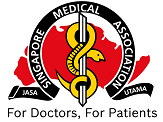Comparison of mean platelet volume in patients with diabetes mellitus, impaired fasting glucose and non-diabetic subjects
Share this Article
Singapore Med J 2008; 49(2):114-6
Comparison of mean platelet volume in patients with diabetes mellitus, impaired fasting glucose and non-diabetic subjects
×
![]()
Screening of hospitalised diabetic patients for lower limb ischaemia: is it necessary?
Share this Article
Singapore Med J 2008; 49(2):110-3
Screening of hospitalised diabetic patients for lower limb ischaemia: is it necessary?
×
![]()
Hyperbaric oxygen therapy in the management of diabetic lower limb wounds
Share this Article
Singapore Med J 2008; 49(2):105-9
Hyperbaric oxygen therapy in the management of diabetic lower limb wounds
×
![]()
Morphometric analysis of skin microvasculature in the diabetic foot
Share this Article
Singapore Med J 2008; 49(2):100-4
Morphometric analysis of skin microvasculature in the diabetic foot
×
![]()
Microbial keratitis: aetiological diagnosis and clinical features in patients admitted to Hospital Universiti Sains Malaysia
Share this Article
Singapore Med J 2008; 49:67-71
Microbial keratitis: aetiological diagnosis and clinical features in patients admitted to Hospital Universiti Sains Malaysia
×
![]()
Renal vascular injuries following nephron-sparing surgery and their endovascular management
Share this Article
Singapore Med J 2008; 49(1):63-6
Renal vascular injuries following nephron-sparing surgery and their endovascular management
×
![]()
Prevalence and determinants of adolescent cigarette smoking in Mongolia
Share this Article
Singapore Med J 2008;49(1):57-62.
Prevalence and determinants of adolescent cigarette smoking in Mongolia
×
![]()
Trans-anal rectal injuries
×
![]()
Teratogenic effects of the anticonvulsant gabapentin in mice
Share this Article
Singapore Med J 2008; 49(1): 47-53
Teratogenic effects of the anticonvulsant gabapentin in mice
×
![]()
Prevalence of active Helicobacter pylori infection among patients referred for endoscopy in Brunei Darussalam
Share this Article
Singapore Med J 2008; 49(1): 42-46
Prevalence of active Helicobacter pylori infection among patients referred for endoscopy in Brunei Darussalam
×
![]()


